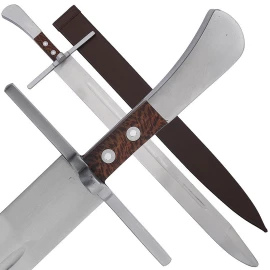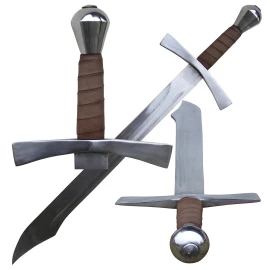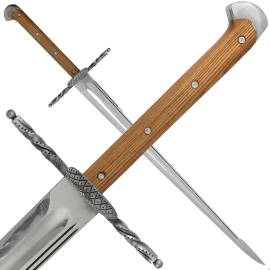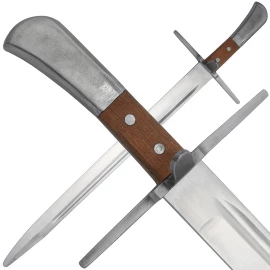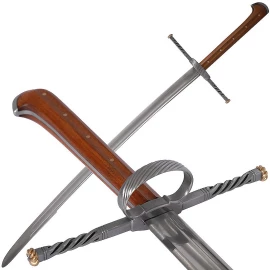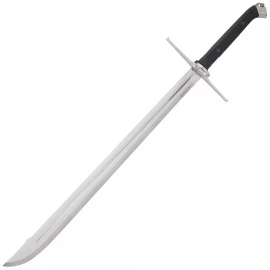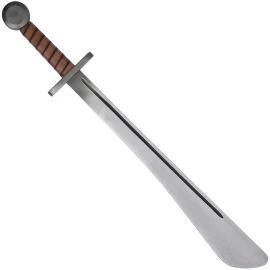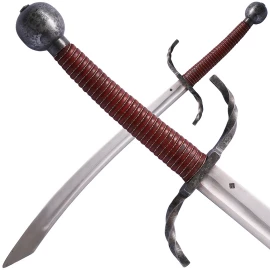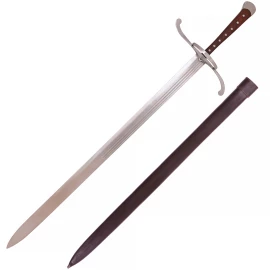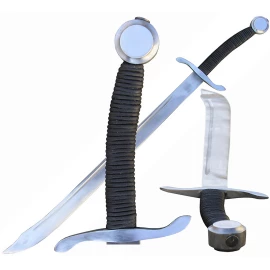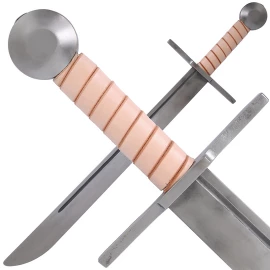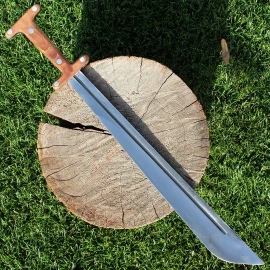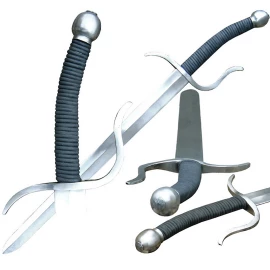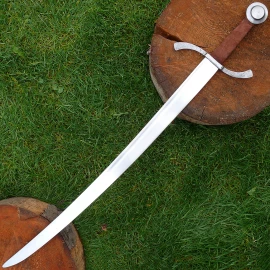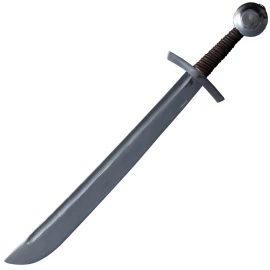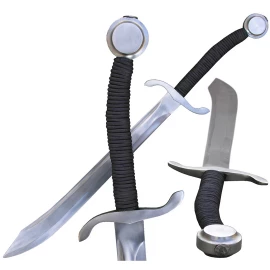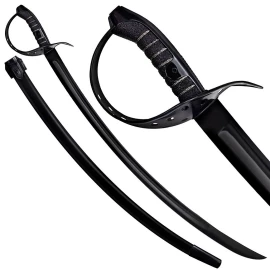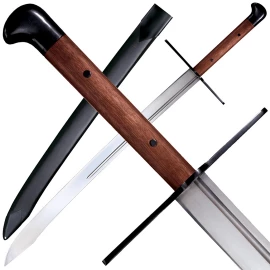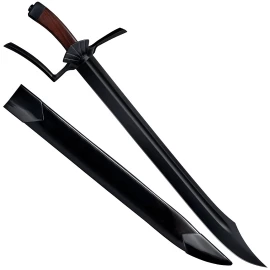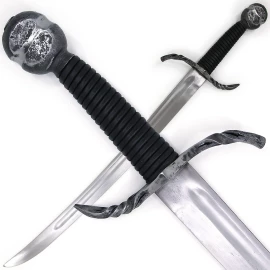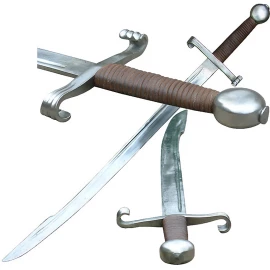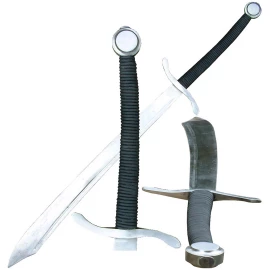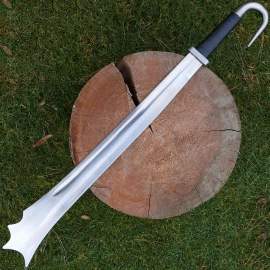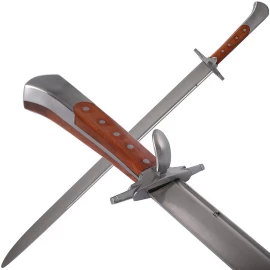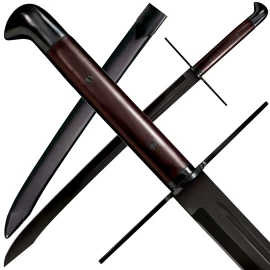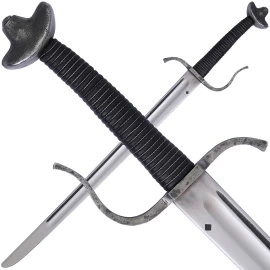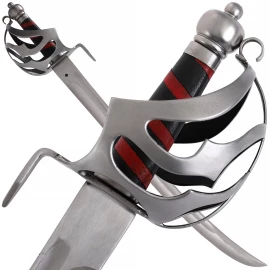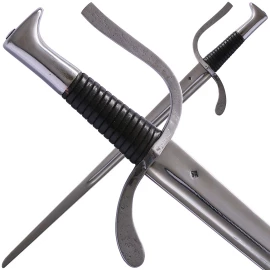Mercenary Infantry Langmesser after a Find in Rine
A popular weapon of the mercenary infantry and the lower social class. It is based on the original discovered in the river Rhine. More information...
Mercenary Infantry Langmesser after a Find in Rine
- Total length 955mm
- Blade length 739mm
- Length of the cross-guard 108mm
- Length of the vertical shell-shaped defense nail 47mm
- Cross section of the blade at the parry 40 x 4.75mm
- The widest part of the blade is 22cm from the tip and measures 35mm
- The fuller on one side of the blade is approx. 51cm long
- The back of the blade has a flat hollow grind
- Thickness from the back of the blade 4.7mm
- Thickness of the striking edge 2.3mm
- Cross-section of the handle on the parry 22.6 x 28.6mm
- A flat knob is welded to the continuous blade tang and the tang is hammered flat at the end
- The handle consists of hardwood shells that are attached to the tang with 5 hollow rivets
- The center of gravity is 6cm in front of the parry
- The falchion can optionally be delivered with a beautiful sheath for an additional charge. The sheath has a wooden core and is covered with leather.
- On the front of the scabbard is written "+ art that tears you + + art that tears you +"
- The falchion weighs 1305 g
- The weight of the sheath is 520 g
Please note: The specified parameters were measured on the photographed specimen. Due to the extent of manual work, these parameters can vary slightly from piece to piece.
A few words from Pavel Moc about the Mercenary Infantry Falchion after a Find in Rine
A popular weapon of the mercenary infantry and the lower social class. It is based on the original discovered in the river Rhine. Karsten Rohweder provided me photo documentation and exact specifications of this weapon in 2011. Since until then such a widespread weapon was missing in our offer, we decided, with his permission, to offer this model to our customers. In 2020, we made a little adjustment by using tubular iron/brass rivets, which were more common in this type of weapon than the solid rivets we had used in the past. We also adjusted the cross-guard shell into a seashell shape. This change also reflects the most characteristic feature in the cross guards of langmessers. We believe that these small changes will catch your eye and please you.
This is one of the best bladed weapons in the Sword class B
This weapon is made by of one of the best swordsmiths in Czechia - Mr. Pavel Moc. His bladed weapons are generally an "artistic license" of historical originals. They are the result of decades-long-experience and discussions with historians, swordsmen and colleagues in the industry. If the replica does not directly correspond to the preserved original, it is based on contemporary iconography, illuminations and its final form is a "well informed stylization".
Steel
The blade is made of spring steel for dynamic strain CSN 14260 (DIN 54SiCr6, GOST 60S2CHA) or CSN 15260 (50CrV4 DIN 1.8159). The steel is heated to 820-860° C and then immersed into oil. The steel is then tempered at 540-680° C according to the prescribed technical standards in computer-controlled-ovens. The first kind of steel has a slightly higher elasticity, the second one can be slightly more hardened. Both types of steel are oil-quenched and tempered to a hardness of 48.5 +/- 2 HRc.
Warranty
This weapon is designed for experienced fencers who prefer light swords with flexible blades and who use rather their head than force in sword combats. The anti-break-warranty for the blade refers only to material defects. The warranty does not cover natural wear of the blade and the grip. The guard is riveted (not soldered) to the blade. It may happen that the rivet connection gets loosened after some time and the sword begins to rattle during combat. This is a sign of wear that does not affect the function of the sword, does not diminish its quality or worsen the safety of the swordsman.
We are here for you


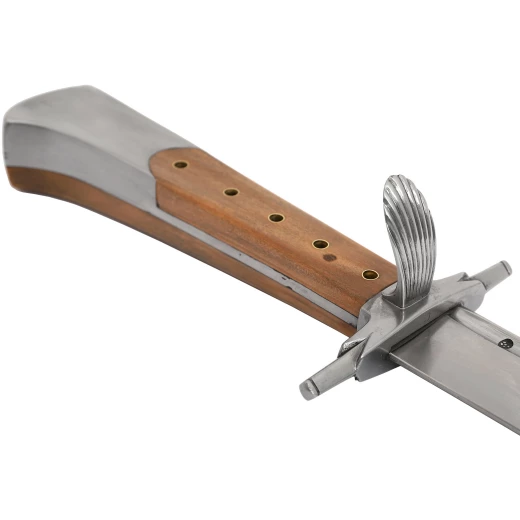






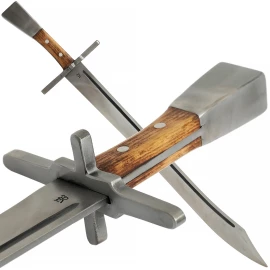
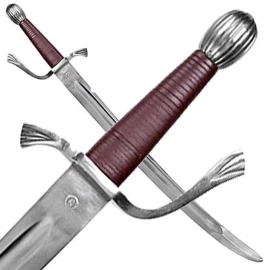
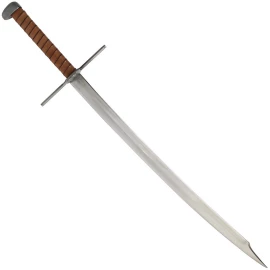
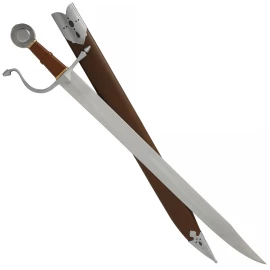
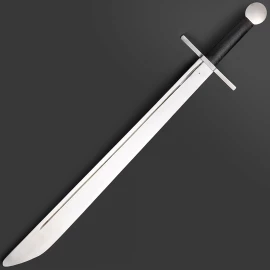

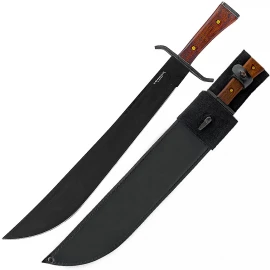
.2152382459.1712903949.jpg.webp)
